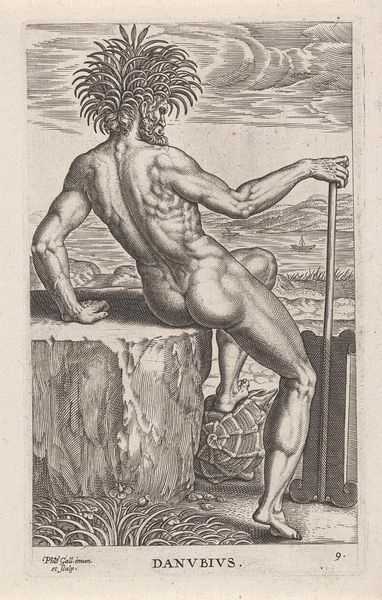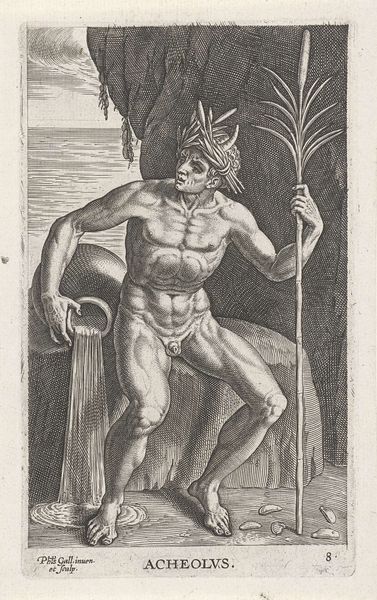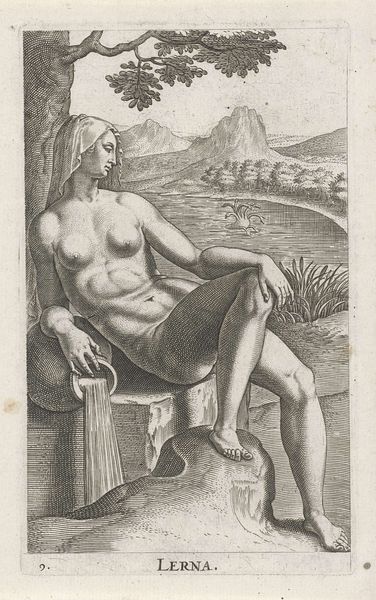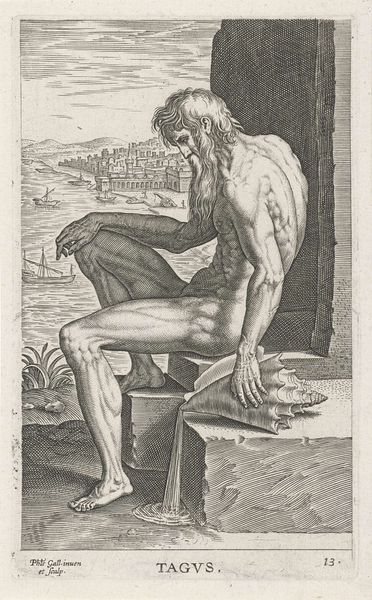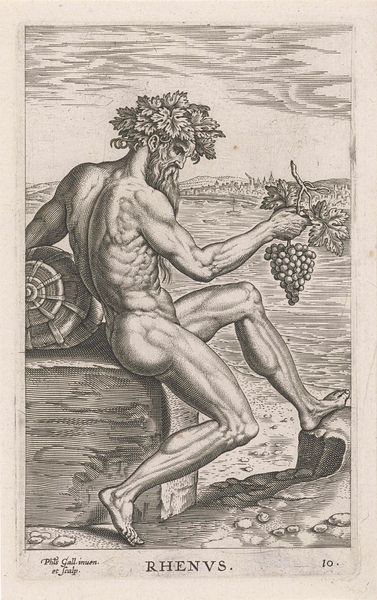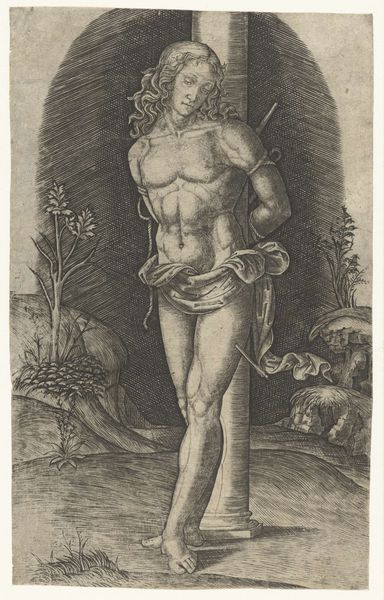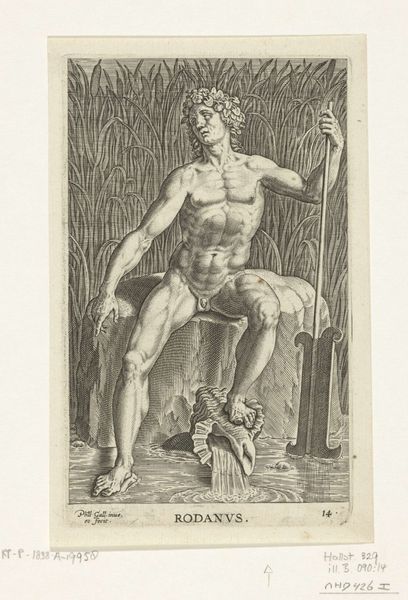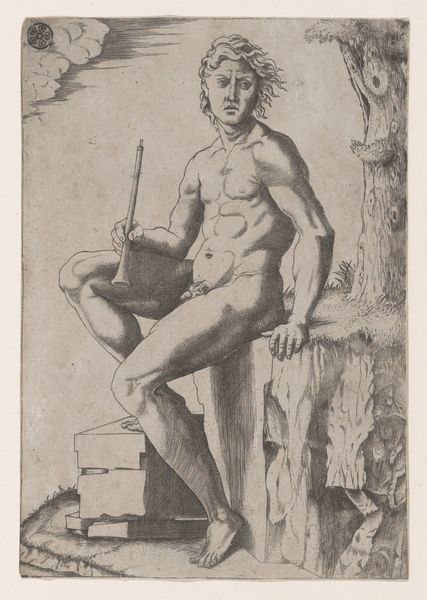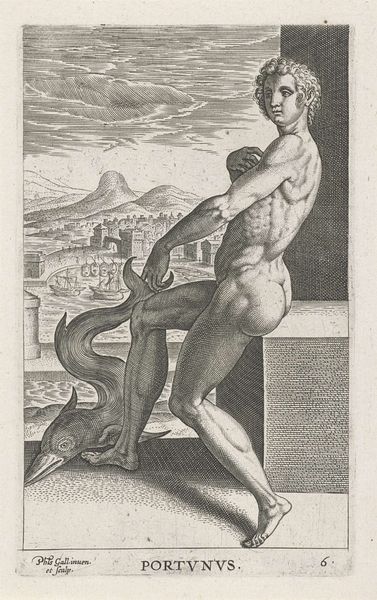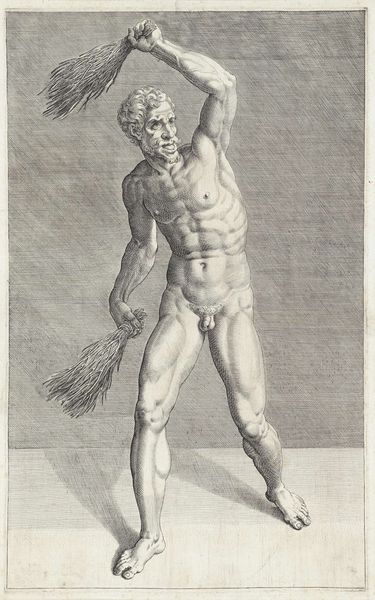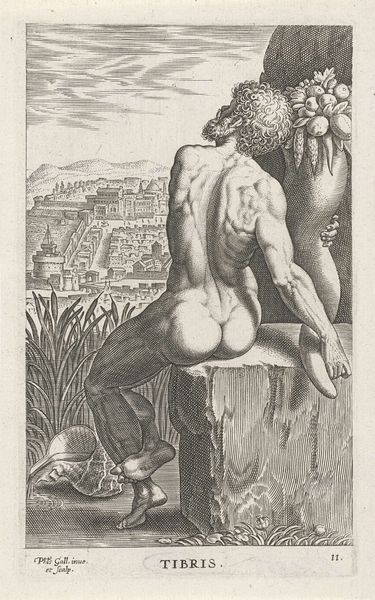
Dimensions: height 165 mm, width 102 mm
Copyright: Rijks Museum: Open Domain
Philips Galle’s “Rivergod Acis” was made using an engraving technique, where lines are incised into a metal plate, which then holds ink and transfers the image to paper. This was a reproducible technique, a form of early mechanical production that allowed images to circulate widely, spreading ideas and aesthetics. The material quality of the print – its fineness of line and tonal range – allowed Galle to evoke the softness of flesh and the flow of water. Look closely, and you will see how the engraving captures the play of light on Acis’s body, making him appear almost lifelike. Galle was deeply embedded in the commercial print industry of Antwerp, and prints like these were often made for a market hungry for classical imagery. Galle’s workshop involved a division of labor, with specialists focusing on different aspects of the printmaking process. This kind of standardized production was a key development in the history of art, and shows how creative work is always shaped by economic forces. Through Galle’s skilled handling of engraving, "Rivergod Acis" demonstrates how technique, materiality, and social context intersect in the creation of meaning.
Comments
No comments
Be the first to comment and join the conversation on the ultimate creative platform.

